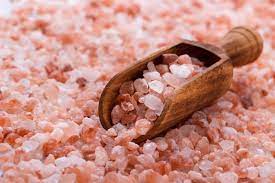Navratri 2023: “Aaye Re Choote Aye, Pujo’r Gondho Aeshe Che..” An old Bengali proverb that roughly translates to “Come, hurry up, it smells like Puja is here” made me hum it this morning as I got out of bed. The song talks about the strange “smells” and “sounds” that we so passionately connect with the festival, such as the pleasant fragrance of Shiuli flowers and the synchronised rhythms of Dhaak. It’s odd that every year, around September or October, just before Durga Puja, I find myself thinking about the song. not one month before or after. The start of Puja for me is symbolised by this.
Since I was raised in Delhi, I had to take additional time off to observe Durga Puja, which is our biggest event. Also, I recall rushing from home to home in my community on holidays like Ashtami and Navami to do Kanjak or Kanya Puja, returning only in time to prepare before pandal hopping. Even though things were “hectic,” I clearly relished every second of it because who wouldn’t? I discovered the concept of “Navratri” for the first time during one of the Kanjak sit-down meals. Although though the same deity is worshipped during Durga Puja and Navratri, the ceremonies are surprisingly dissimilar.
In a Pujo Pandal, you are free to consume anything you like, but if you are following a Navratri vrat, you must alter your diet and forgo staples like wheat and rice. I was too young to comprehend it all, so I went back to my favourite dish from the Kanjak meal, the Halwa, and I licked the plate clean, a habit for which I am still well-known.
Anyhow, until a few years later, when I had the opportunity to savour a sumptuous dinner of Aloo Kadhi and Samak Ke Chawal at my neighbor’s home and was astounded by its simple, satiating quality, the concept of a “Navratri vrat” continued to sound very “daunting” to me. I stood up to ask for more kadhi because it was so comforting. This mild yoghurt-based potato curry was spiced up with just the right quantity of black pepper and green chilies. Since every “kadhi” is incomplete without its mate “chawal,” Samak Ke Chawal, which is strictly not even rice but rather boiled barnyard millets, was used to fill the void. For countless devotees throughout India, particularly in North India, this hearty meal has helped make Navratri fasting special.
Since today is the first day of Navratri, here is an exclusive recipe for Aloo Kadhi and Samak ke chawal that we obtained from Chef Akshay Bhardwaj, Head Chef of Andaz Delhi. Aloo ki Kadhi is frequently made in many Hindu households in Delhi, Haryana, Punjab, and Uttar Pradesh during Navratri. The chef maintains the recipe straightforward, satvik (as it should be), and flavorful. To ensure that your meal is also very wholesome, particularly for those observing the vrat, the Kadhi also includes kuttu ka atta. Now let’s get to the preparation without further ado.
Recipe: Samak Chawal, boiled barnyard millet, Aloo Ki Kadhi, and stewed potatoes with buckwheat and curd gravy
Ingredients
Potato diced – 80 gm
Kuttu ka atta – 20 gm
Yoghurt – 150 gm
Methi dana – 3 gm
Jeera – 3 gm
Turmeric – 3 gm
Green chili chopped – 5 gm
Red chili – 2
Chopped coriander – 5 gm
Senda namak – 3 gm
Oil – 50 ml
Samak rice – 100 gm
Method
- Yogurt, turmeric, kuttu ka atta, and senda namak should all be added to a dish. It should be thoroughly mixed before being poured into a pan and cooked for 10 minutes over a medium heat.
- Add the chopped potatoes and continue cooking them until they are fully cooked. Make sure they don’t become too pliable.
- Add methi dana, jeera, red and green chilies to the oil in a separate skillet.
- Mix well after adding this seasoning to the kadhi.
- Choose your finest serving bowl, then add some chopped red and cilantro.
How to Make Samak Rice
- Wash and soak rice in a bowl for 30 minutes.
- Rice should be softened by boiling it after being moistened.
- Serve hot with Aloo Ki Kadhi


